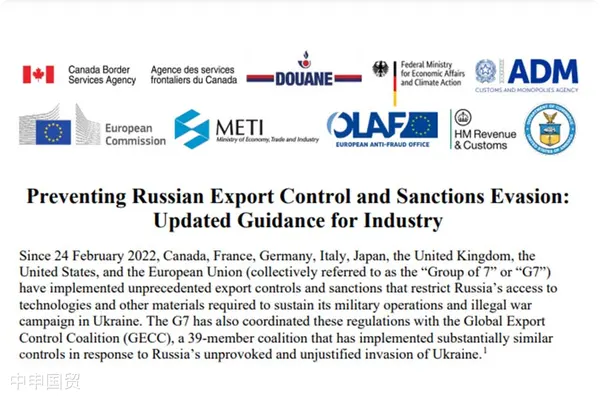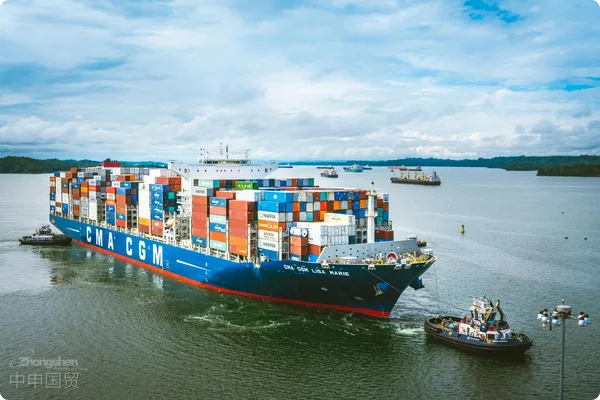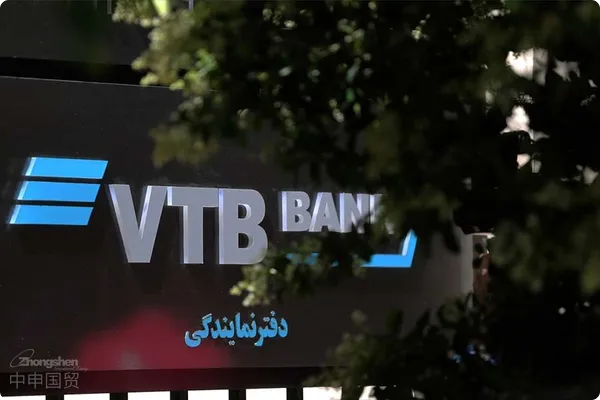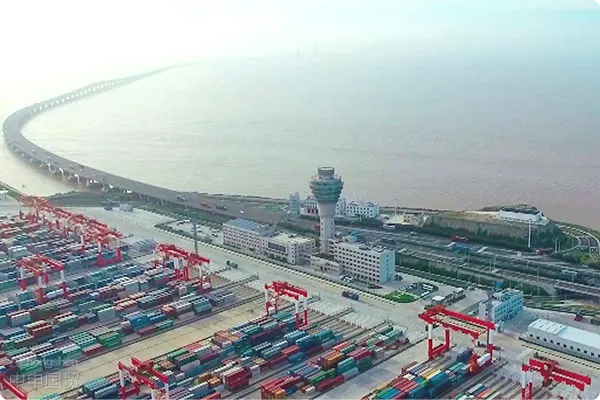- Shanghai Zhongshen International Trade Co., Ltd. - Two decades of trade agency expertise.
- Service Hotline: 139 1787 2118

, hereinafter referred to as the Guidance or Industry Guidance), claiming that it aims to help enterprises identify and respond to Russias evasion of sanctions. Specifically targeting Russias evasion of export controls, it further clarifies the red flag indicators and high - risk item list that enterprises should pay attention to during the export process. The following is a summary of the document content:Preventing Russian Export Control and Sanctions Evasion: Updated Guidance for IndustryBackground information
Since February 24, 2022, Canada, France, Germany, Italy, Japan, the UK, the US, and the EU (collectively referred to as G7) have imposed unprecedented export controls and sanctions on Russia. These measures aim to restrict Russias access to technologies and materials for military operations, weaken its economy, and curb Russias ability to purchase Western technologies.Coordination mechanism
G7In February 2023, G7 announced the establishment of an enforcement coordination mechanism to strengthen the implementation of multilateral export controls and sanctions. In September 2023, an export control enforcement sub - working group was set up under this mechanism, mainly through means such as information sharing and discussion of best practices to help countries better respond to Russias evasion of sanctions.The Guidance provides industry with recommendations to prevent controlled items from being diverted to Russia through third - party countries. Its content includes:
Update of the high - risk item list;
Red flag indicators for export control and sanction evasion;
Best practices for the industry to respond to these red flags;
Screening tools and resources to assist in due diligence.
Russias evasion behavior
Russia has used various deceptive means to bypass the established export controls and sanctions, including transshipment of technologies and controlled items through third - party countries. All parties in the supply chain (such as exporters, re - exporters, manufacturers, distributors, financial institutions, logistics companies, etc.) need to be aware of this risk and take measures to avoid it.High - priority list
G7 countries have identified a Common High - Priority List (CHPL) containing 50 key items that Russia is trying to obtain. The industry should conduct necessary due diligence on these items to prevent their diversion to Russia.The High - Priority List (CHPL) was jointly developed by the EU, Japan, the UK, and the US, aiming to help the industry identify key items sought by Russia for its war efforts. These items are extracted from Russian - made weapons found on the battlefield or are considered important components of Russian - made military equipment.
The Critical High - Priority List (CHPL) is jointly developed by the EU, Japan, the UK, and the US. It aims to help the industry identify key items sought by Russia for its war efforts. These items are extracted from Russian - made weapons found on the battlefield or are considered important components of Russian - made military equipment.
Items in CHPL are identified by 6-digitHarmonized System Code (HS Code)Identification. These codes are widely used by exporters, carriers, and freight forwarders globally to standardize the classification of goods. The purpose of the CHPL is to assist the industry in conducting due diligence and preventing the illegal diversion of these items to Russia.
The main categories of items in the list include:
- Integrated circuits (microelectronics): These components are crucial for the production of advanced Russian precision - guided weapon systems, as Russia lacks domestic production capacity and there are limited global suppliers.
- Computer Numerical Control (CNC) machine tools and their components: Russias military - industrial complex heavily relies on the technology from G7 or GECC countries to manufacture advanced weapons.
- Electronic components: Although Russia has some domestic production capacity, it prefers to use the technology from G7 or GECC partner countries to manufacture its military equipment.
- Machinery and other components: Components widely used in Russian - made weapon systems.
- Manufacturing and quality testing equipment: Equipment used for manufacturing electrical components, circuit boards, and modules.
The purpose of the CHPL is to help the industry identify these highly sensitive items so that necessary risk assessment and due diligence can be carried out during the export process. G7 countries use this list to ensure that enterprises can avoid their technology being used in Russias military activities during the export process.
Red flag indicators: The guidelines list a series of potential red flag indicators, alerting the industry to be vigilant about possible circumvention behaviors during exports, such as new customers suddenly importing a large quantity of controlled items, using false declarations, abnormal cargo transportation routes, etc.
The G7 has listed multiple red flag indicators to help industries identify potential export control and sanctions evasion activities. Before exporting, enterprises should use these indicators for due diligence and remain vigilant against other possible warning signs. These red flags may indicate transactions involving Russian evasion behaviors, especially with third-country participation.
The main red flag indicators include:
- New importers or exporters: Especially new ones located at the same address as the sanctioned entities, especially when it comes to items in the CHPL list.import and exportSudden increase in import value and/or volume
- : If an importer suddenly experiences a significant increase in the import value or quantity of CHPL items, it may imply improper behavior.Transshipment through a third country: If an enterprise that originally exported directly to Russia starts exporting through a third country after February 24, 2022, this is a common means of evading sanctions.
- False declarations: Including false declarations of export authorization, misclassification of goods, under - valuation of goods, etc., to conceal the actual export of sensitive items.
- Document issues: Inaccurate or missing documents, such as unclear transportation routes, or using shell companies, front companies, or intermediaries to cover up the final destination of the actual goods.
- Suspicious customer information: Customers are reluctant to provide certificates to prove that they will not resell items to Russia or sanctioned third countries, or the customers business address does not match the actual business.
- Customers connection with Russia: The customer may have business dealings with Russia, or the customers business is related to Russias defense department, and may even be located at the same address as the sanctioned entities.
- Suspicious payment methods: Payment through a third - country entity unrelated to the transaction, especially payments from sanctioned countries.
- Abnormal cargo transportation routes: The transportation route of the goods does not match its product type or destination.
Other red flags also include:
- Inconsistency between transaction amount and goods value: The quantity or value of the goods does not match the payment amount.
- Addresses or companies conflicting with the sanctions list: If a companys address matches an address on the sanctions list, it may indicate that the company conducts transactions through a shell company.
- Best practices: When encountering red flags, enterprises should conduct additional customer and transaction due diligence. If doubts still exist, the transaction should be avoided and reported to the relevant authorities. In addition, the guidelines also recommend using screening tools to check the trading parties, especially whether they are individuals or entities on the sanctions list.
Additional resources: Lists a number of export control and sanctions - related tools of international organizations and countries for enterprises to refer to during due diligence and compliance processes. These resources mainly help the industry better understand and comply with the sanctions regulations of various countries and provide screening tools for specific trading parties and items.
CanadaList of restricted items and technologies
The main resources include:
- Canada
- Restricted Goods and Technologies List:This list enumerates the goods and technologies covered by Canadas special economic measures against Russia.
- Special Economic Measures (Russia) Regulations:It includes detailed regulations on the special economic measures imposed on Russia.
- European Commission
- List of Common High Priority List Items:It lists in detail the CHPL items jointly developed by the EU and G7 countries for the industry to refer to during due diligence.
- European Commission Guidance for EU Operators:It provides EU operators with detailed guidance on how to comply with the sanctions against Russia.
- Sanctions webpages:It includes opinions on EU sanctions against Russia, frequently asked questions (FAQs), and other relevant resources.
- Export Enforcement Five (E5)
- Guidance for Industry and Academic Institutions(Guidance for Industry and Academia): Provide specific operational guidelines for the industry and academia to comply with export controls and sanctions, especially for high - priority projects related to Russia.
- Germany
- Tips Document for Sanctions Evasion(Sanktionsumgehung – Hinweispapier zur Unterstützung der Unternehmen beim Umgang mit warenverkehrsbezogenen Sanktionen): Provide guidelines for German companies to deal with sanctions related to the flow of goods.
- Sanctions Evasion Tips(Sanktionsumgehung – Hinweis: Kriegsrelevante Güter gelangen vermehrt von ausl?ndischen Tochtergesellschaften von EU - Unternehmen nach Russland): A tips document focusing on how to prevent foreign subsidiaries of EU companies from diverting military supplies to Russia.
- Japan
- Sanctions Guidance and Related Regulations(Guidelines, Explanatory Materials, Related Regulations): Include detailed regulations on Japanese export controls, lists of sanctioned entities, and answers to frequently asked questions (FAQs).
- The UK
- 2023Announcement in August of [Year]: Russia Sanctions – Trade Sanctions Circumvention(Notice 2023/08: Russia Sanctions – Trade Sanctions Circumvention): Provide detailed instructions on how to prevent Russia from evading trade sanctions.
- National Economic Crime Centre: Red Alert for Exporting High - Risk Goods(National Economic Crime Centre: Red Alert – Exporting High Risk Goods): Issue a special red alert on exporting high - risk goods, aiming to help companies identify potential evasion behaviors.
- United States
- Best Practices for Certification to Prevent Diversion of Priority Items to Russia(Best Practice: Certification to Prevent Diversion to Russia of Highest Priority Items): Provide best - practice guidelines on how to prevent the illegal diversion of priority items to Russia through certification.
- Guidance to Prevent Russia from Evading Prioritized Harmonized System Codes(Guidance to Prevent Evasion of Prioritized Harmonized System Codes to Russia): Focus on how to identify and prevent Russia from obtaining controlled items by evading Harmonized System codes.
- Bureau of Industry and Security: Russia - Belarus Export Controls Resources(Bureau of Industry and Security: Russia - Belarus Export Controls Resources): Provide companies with export control resources and documents related to Russia and Belarus.
Screening Tools: The following provides links to screening tools related to export controls and sanctions in various countries, which are used to query sanction lists and review information of export trading parties:
Canada:Canadian Autonomous Sanctions List
European Union:EU Sanctions List
The UK:UK Sanctions List
United States:US Comprehensive ScreeningList
Facing the increasingly strict international trade control, ensuring compliance is the cornerstone of a companys success. Whether it is the risk assessment of export - controlled items or the identification of red flags during the transaction process, companies must strengthen their risk management capabilities to ensure the smooth and safe conduct of their businesses.
Full text of the original document:g7-updated-guidance-industry-preventing-russian-export-control-and-sanctions (bis.gov)
Related Recommendations
? 2025. All Rights Reserved. Shanghai ICP No. 2023007705-2  PSB Record: Shanghai No.31011502009912
PSB Record: Shanghai No.31011502009912










